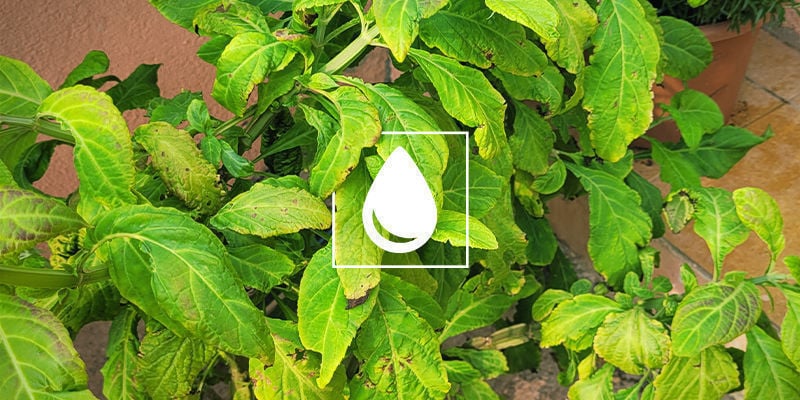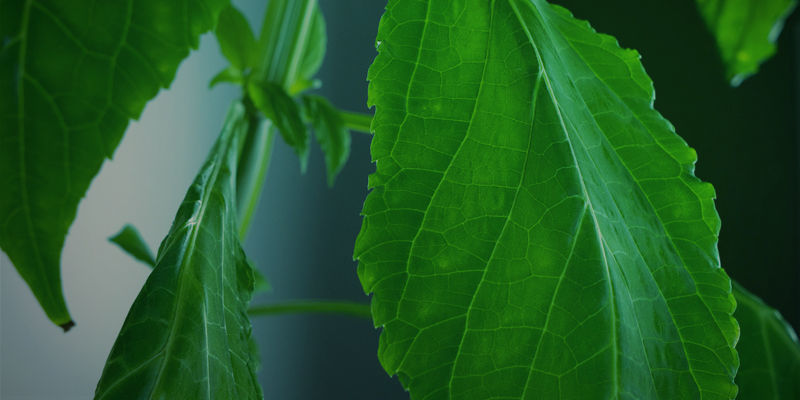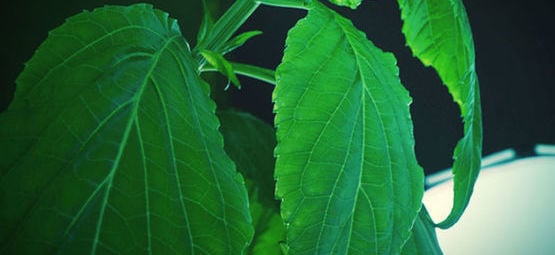
How To Grow Salvia Divinorum
Otherwise known as the “sage of the diviners”, Salvia divinorum is a plant species with hallucinogenic properties. While its beginnings are rooted in Mexican culture, it has garnered huge popularity in modern times among those looking to experience its potent effects. Whether brewed into a tea or chewed, there are many ways to use the leaves of this plant. But how do you go about growing your own? Read on to follow our steps for salvia success, and you too can unlock the psychedelic potential of this plant.
When it comes to Salvia divinorum, there is nothing more satisfying than growing your own.
Before getting into the nitty-gritty of propagating and growing a salvia cutting, it’s good to know some of the plant’s basic traits. Salvia divinorum is a semi-tropical perennial plant, meaning it will grow year after year, as long as it remains in its optimal growing conditions.
As such, it should not be exposed to temperatures lower than 10°C. The ideal temperature for the plant is between 15–27°C, with a relative humidity of 50% or more.
In the wild, salvia propagates by falling over and spreading its seeds. This means that it is likely to need support as it grows. Moreover, for this reason, growing from cuttings is preferable to seeds.
Propagating Salvia Divinorum From Your Cutting
|
|
STEP 1Clean the cutting by removing any dead or blackened material; also remove any leaves that would end up below soil level. If using one of Zamnesia’s very own cuttings, you must also remove all the agar (the gelatine-like substance). |
|
|
STEP 2Fill a small pot to ⅔ capacity with fresh potting soil. It is not recommended to use soil from outside, as this can contain pests that'll kill your cutting in this vulnerable stage. Potting soil bought from a garden centre will be much cleaner and contain the right balance of nutrients for a young plant. Ensure that the pot you're using has drainage holes in the bottom to ensure the soil doesn't become waterlogged. |
|
|
STEP 3With your finger, make a hole in the centre about 5cm deep. Place your cutting into the hole and fill around the roots with potting soil. |
|
|
STEP 4Now, administer a small amount of water to the soil around the plant, and mist it with a spray bottle. |
|
|
STEP 5Place a transparent plastic bag over the plant, and secure it at the base of the pot with an elastic band. This will raise and maintain the high level of humidity needed for the cutting to thrive. If you have one, place the entire pot in a large ziplock bag and seal the top, as this makes watering much easier. Whichever bag you use, ensure that it does not restrict or bend the plant (a 1-gallon bag is normally ideal). |
|
|
STEP 6Place the cutting in a bright and warm location. Filtered sunlight is best, as salvia plants do not like direct sunlight, nor do they like heavy shade. |
|
|
STEP 7Your salvia plant should now begin to grow and flourish. The humidity within the bag means frequent watering is not required, but ensure that the salvia cutting never dries out. In order to acclimatise the cutting to natural humidity levels, leave it to grow in the bag for about a week; then for the following two weeks, punch one or two holes in the bag each day. This will gradually reduce the humidity within the bag. |
|
|
STEP 8After two weeks of slowly acclimatising the salvia cutting, you can remove the bag. If it starts to wilt, replace the bag for another week. If it remains strong, then it has successfully acclimatised to the humidity. |
|
|
STEP 9The plant can now be carefully transplanted to a larger pot. There you have it! Your Salvia divinorum should now be established. |
How To Take Cuttings From Your Own Salvia Plant
-
Ensure you use a clean blade to take the cutting.
-
Cut a stem just below a node; this is where the roots will develop.
-
Ensure the cut remains wet until it is transplanted into soil.
- As this will be a completely fresh cutting and have no roots, cover the cut, and up to 2cm above the cut, in rooting powder or gel to stimulate root growth. This is done just before putting the cutting in the soil.
Tips for General Plant Maintenance Once Your Salvia Is Established

-
Water your salvia plant whenever the soil feels like it is drying out. You'll know your plant needs water when the leaves begin to wilt.
-
Keep your salvia plant in a bright, warm location out of direct sunlight.
-
Salvia divinorum can grow quite tall (up to 2.5m in ideal conditions). It is possible to trim the tops to force the plant to grow outward. Be careful not to trim too much, though, as this could damage the plant’s development.
-
If you are keeping your plant indoors, take it outside on warm, rainy days to allow rainwater to wash through the pot. This will help prevent mineral buildup in the soil that could harm the plant.
-
It is a good idea to use shop-bought fertiliser/plant feed every now and again to keep the plant healthy. Just be careful not to overfeed and cause mineral buildup.
-
Keep a close eye out for pests such as slugs and aphids, who seem to have a particular attraction to the plant. Considering you plan to use the plant yourself, do not use any harmful toxins to deal with pests; investigate safer alternatives. For example, placing a bowl of beer near your plants is a good preventative measure against slugs, who are attracted by the beer and will subsequently drown.
Final Words on Growing Salvia

Growing your own salvia can be immensely rewarding, increasing the power and satisfaction of a good trip. Even if you don’t smoke it, growing a healthy, happy plant is always a pleasure. With these tips, you should find that growing a flourishing bush of your own seer’s sage is simple and highly enjoyable.
-
 4 min
November 22, 2020
Salvia Divinorum: The Do's And Don'ts
Whether you're a seasoned expert or total novice, keep reading as we break down the most important things to consider before any salvia trip.
4 min
November 22, 2020
Salvia Divinorum: The Do's And Don'ts
Whether you're a seasoned expert or total novice, keep reading as we break down the most important things to consider before any salvia trip.
-
 3 min
June 13, 2019
How To Make Salvia Divinorum Tea
Salvia is unique among psychedelics, both in its effects profile and its pharmacology. It's often viewed as bizarre rather than pleasant, but for intrepid explorers of the mind, it's a vital part...
3 min
June 13, 2019
How To Make Salvia Divinorum Tea
Salvia is unique among psychedelics, both in its effects profile and its pharmacology. It's often viewed as bizarre rather than pleasant, but for intrepid explorers of the mind, it's a vital part...
-
 15 min
January 21, 2019
Salvia: Everything You Need To Know
15 min
January 21, 2019
Salvia: Everything You Need To Know
-
 2 min
June 3, 2018
Why Does Salvia Make You Trip So Hard?
Salvia is an extremely potent atypical hallucinogen. It is well known for its often jarring and full on trips, leading it to be used as more of a spiritual aid than a recreational hallucinogen. We...
2 min
June 3, 2018
Why Does Salvia Make You Trip So Hard?
Salvia is an extremely potent atypical hallucinogen. It is well known for its often jarring and full on trips, leading it to be used as more of a spiritual aid than a recreational hallucinogen. We...
-
 4 min
February 25, 2018
How To Process Your Salvia Divinorum Plant
If you want to have properly dried leaves of a Salvia divinorum plant, check out this article to see how to process them correctly for ingestion. See which techniques are most efficient and which...
4 min
February 25, 2018
How To Process Your Salvia Divinorum Plant
If you want to have properly dried leaves of a Salvia divinorum plant, check out this article to see how to process them correctly for ingestion. See which techniques are most efficient and which...
-
 3 min
April 9, 2014
How To Make Salvia Divinorum Extract From Dry Leaves
If you grow your own Salvia plants, why not make your own extracts? With a little kitchen chemistry you can easily produce a potent concentrate yourself.
3 min
April 9, 2014
How To Make Salvia Divinorum Extract From Dry Leaves
If you grow your own Salvia plants, why not make your own extracts? With a little kitchen chemistry you can easily produce a potent concentrate yourself.











 United States
United States








